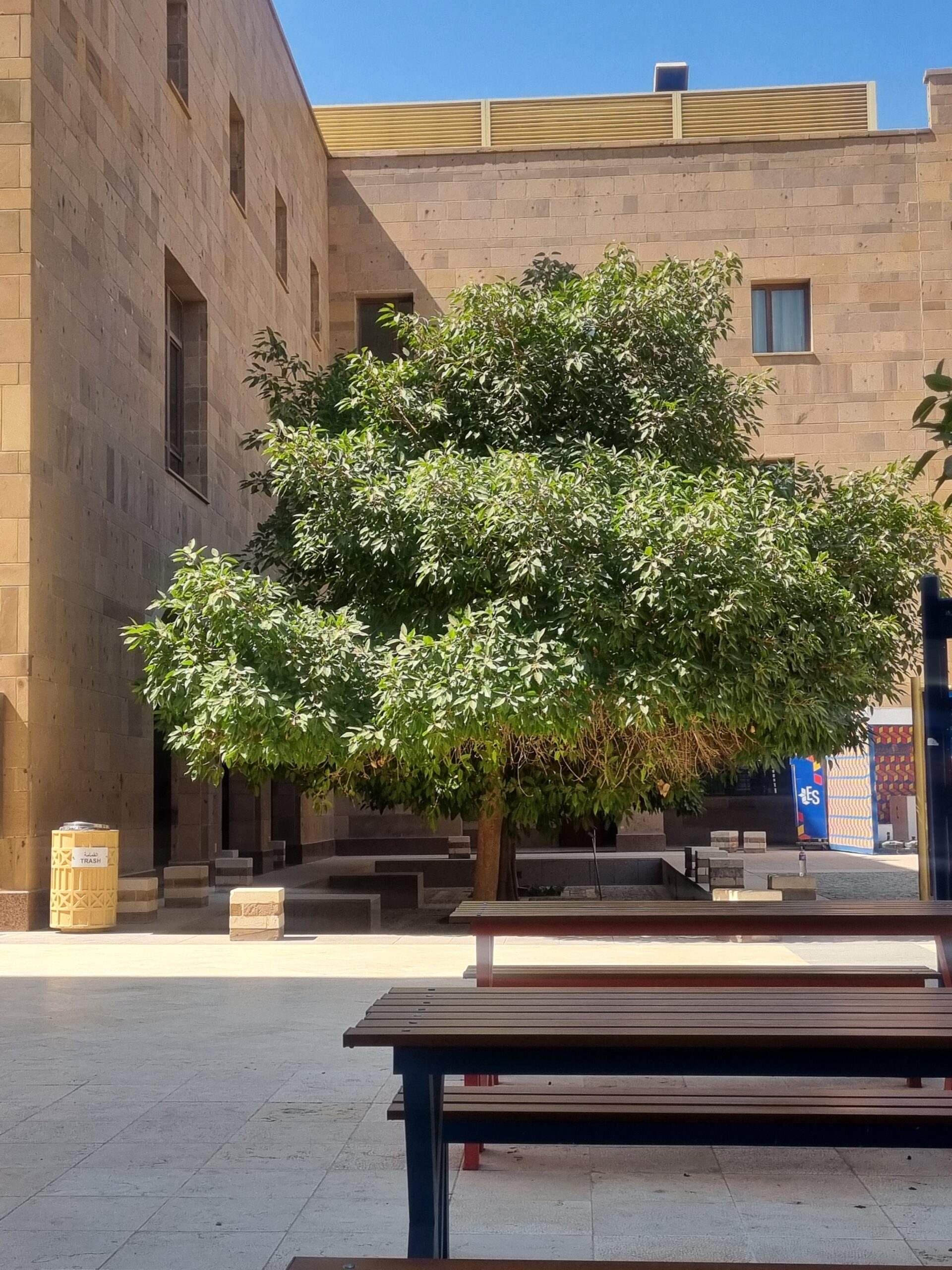Introduction
The American University in Cairo’s New Cairo Campus spans 260 acres and is designed to accommodate over 6,500 students and 2,500 faculty and staff. It includes a range of academic facilities, including five schools, a Campus Center, a library, modern classrooms and laboratories, and multiple open courtyards. The campus integrates advanced technology, environmental sustainability, and accessibility into its design.
Architectural Experience
Walking through the AUC New Cairo campus feels like traversing a modern interpretation of Egypt’s architectural heritage. The sandstone facades, meticulously crafted arches, and open courtyards evoke memories of historic Islamic edifices, yet they are reimagined here with a contemporary sensitivity. The balance between tradition and modernity is evident in the way the campus captures the essence of classic Egyptian design—its use of natural light, guided breezes, and space—while seamlessly integrating advanced materials and sustainable practices.
Thoughtfully placed seating areas, embedded into the architecture and landscape, contribute spots of solitude. Found in corridors, courtyards, and gardens, these benches and stone ledges invite one to pause and take in the surroundings providing moments of stillness. The subtle blend of natural and built environments create a series of intimate experiences. The campus feels alive, not just as a rigid space for a specific function, but as a place that encourages reflection, connection, and a deeper engagement with the architecture itself. Great place to visit when in Cairo.
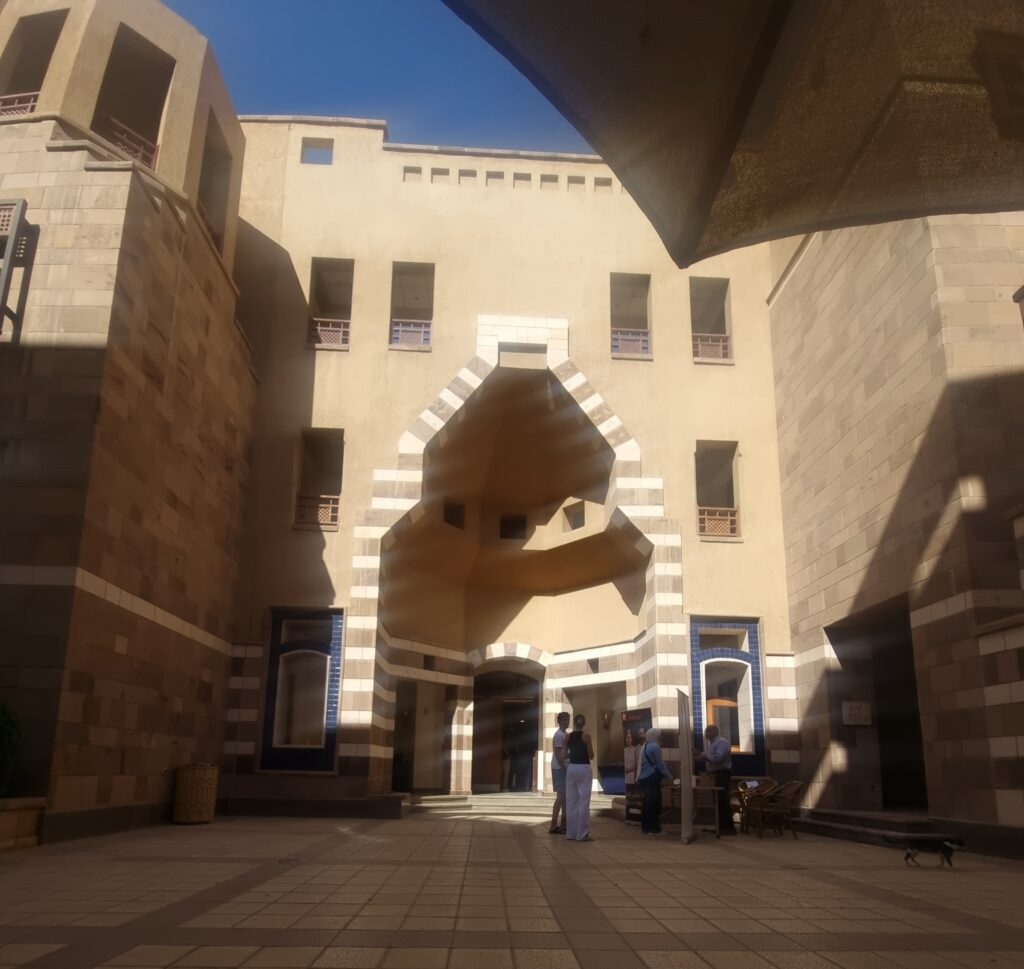


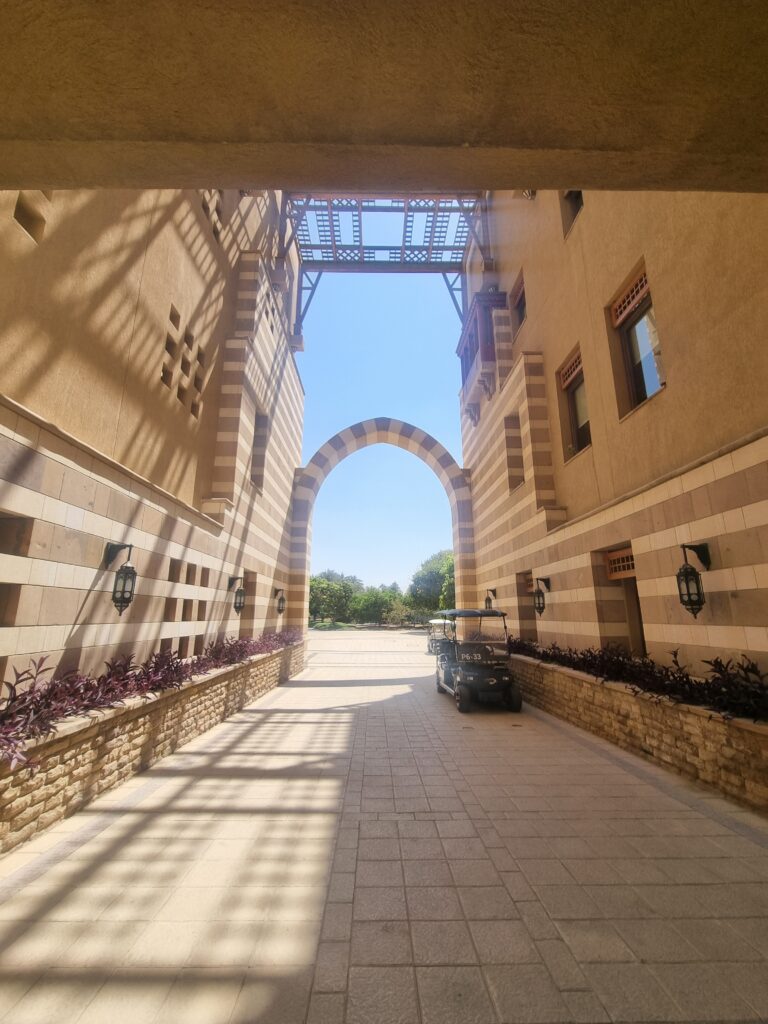
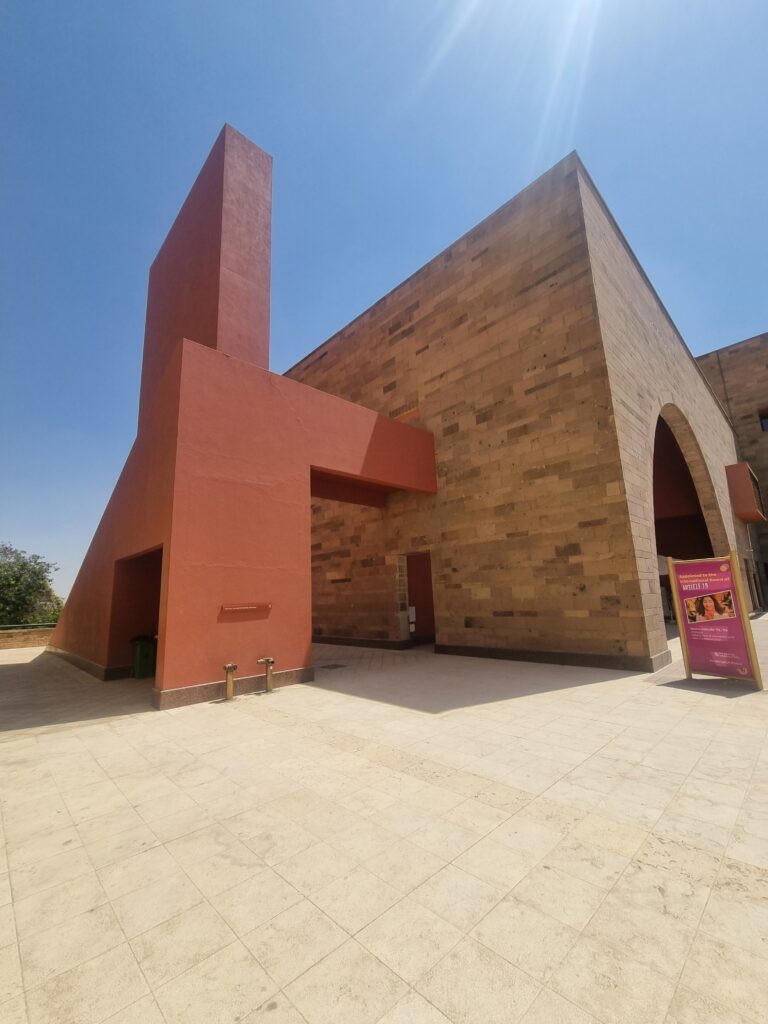

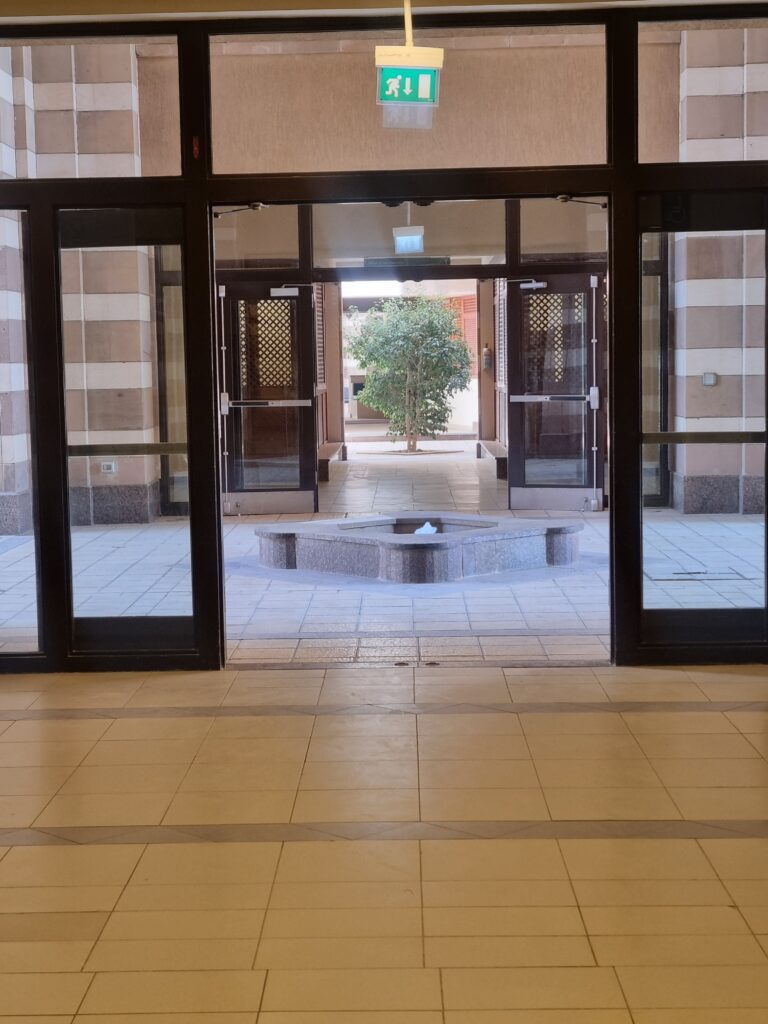

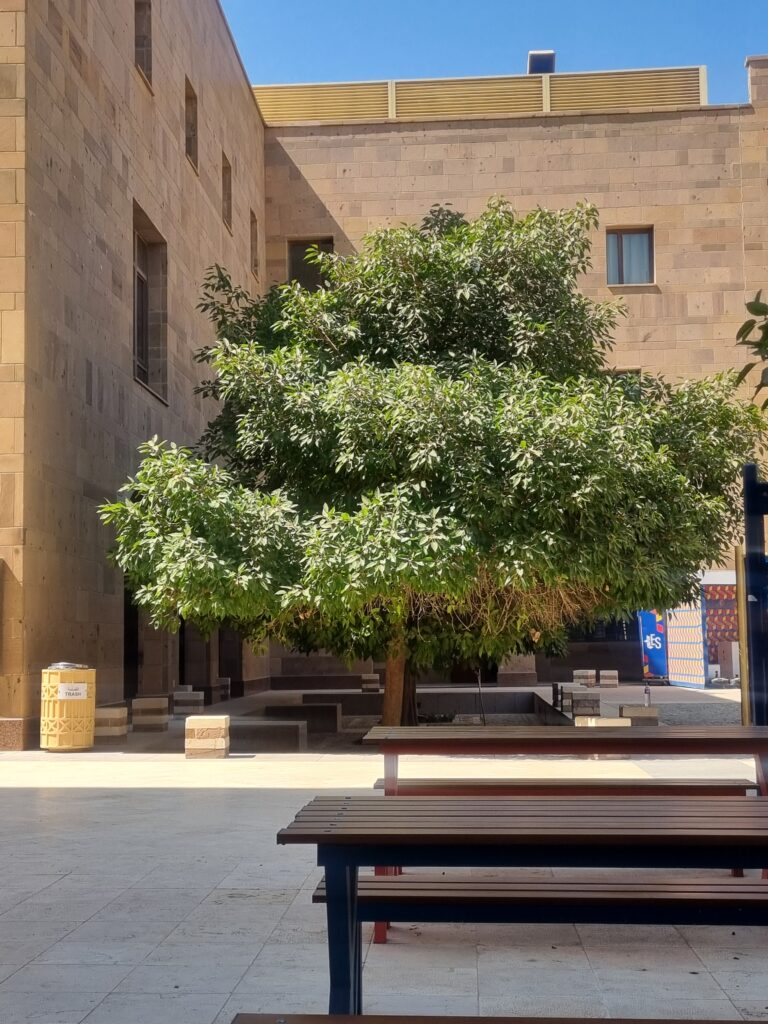
Architectural Design and Construction
The New Cairo Campus was developed through a collaboration between the Boston Design Collaborative, Sasaki Associates, and the Abdel-Halim Community Design Collaborative. The architectural approach combines traditional Egyptian techniques, such as stone-cutting from Upper Egypt, with influences from various global architectural styles, including the arches of the Great Mosque of Córdoba.
The construction of the campus involved significant resources, including 24,000 tons of reinforcing steel and 115,000 square meters of stone, marble, and granite. More than 7,000 workers were involved, working in shifts to complete the project. Sandstone was sourced from a quarry in Kom Ombo, located 50 kilometers north of Aswan, and was processed on-site to meet the specific needs of the campus’s design.
Campus Layout and Design Features
The campus is organized around a central thoroughfare known as the “campus spine,” which connects various academic and social spaces, promoting interaction within the university community. The design incorporates both traditional and contemporary elements, with the main portal of the campus reflecting the arch at AUC’s historic Tahrir Square campus. The student residences, designed by Ricardo Legorreta, are noted for their use of bold colors and are set among palm groves and courtyards.
Sustainability and Environmental Design
Sustainability was a key factor in designing the New Cairo Campus. Energy-saving systems reduce the need for heating and cooling. The campus layout uses natural wind to cool buildings, saving energy.
Over 60 acres of land are landscaped with a variety of plants, including native species that need less water. Plant waste is composted to reduce the campus’s carbon footprint. A service tunnel underground holds cables, pipes, and other infrastructure, ensuring efficient campus operations.
Institutional Sustainability Efforts
In 2011, AUC established the Office of Sustainability to address environmental challenges such as climate change, resource conservation, and waste management. The office works to integrate sustainability into the university’s operations and culture, aiming to reduce resource use and operational costs. AUC’s sustainability efforts have been recognized internationally, with the university being included in The Princeton Review Guide to Green Colleges for six consecutive years. In 2021, AUC was ranked first in Egypt and Africa in the UI Green Metric World University Rankings.
More References
AUC Background and Construction
AUC Sustainability Facts & Figures
